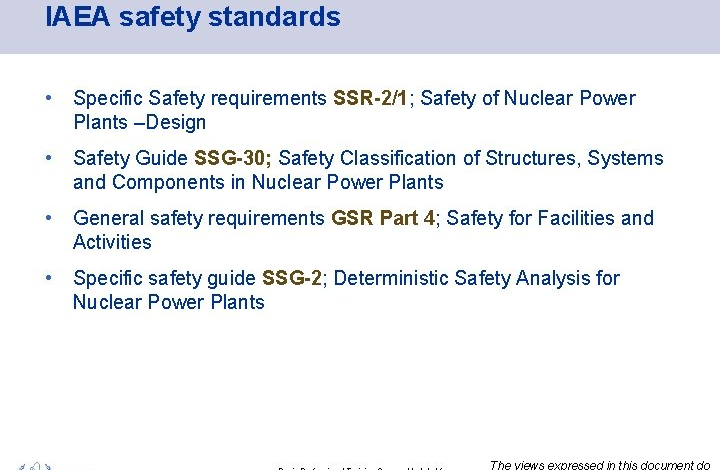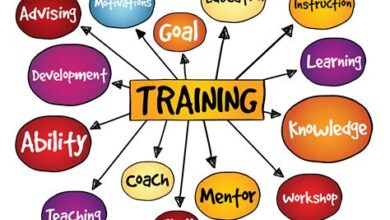Basic Professional Training for Nuclear Safety Explained

In today’s rapidly advancing world of energy, Basic Professional Training for Nuclear Safety stands as a crucial cornerstone for responsible nuclear operations. As the nuclear industry continues to expand, effective Nuclear Safety Training becomes not just a necessity but a moral imperative to safeguard both personnel and the environment. Historical incidents have vividly highlighted the potential dangers of inadequate training, showing that robust professional development in nuclear safety is essential for minimizing risks in this high-stakes field. This article will explore key frameworks, regulatory standards, and innovative approaches that make up comprehensive training programs, underscoring the need for vigilance in the nuclear sector. By equipping workers with the necessary knowledge and skills, we can foster a culture of safety that is indispensable for the nuclear industry’s future.
Understanding the fundamentals of educating professionals in nuclear safety is essential for the continued enhancement of safe nuclear practices. This professional development in nuclear safety encompasses a broad spectrum of education, emphasizing the importance of adhering to nuclear regulatory standards that govern operational protocols. The need for proficient nuclear industry training not only addresses potential hazards but also prepares workers for real-life emergency scenarios through innovative safety training techniques. As the global energy landscape shifts towards more sustainable solutions, the imperative to reinforce and expand our training frameworks becomes increasingly apparent. Collaborative efforts and advancements in technology are reshaping how professionals are trained, ensuring that best practices are universally accessible and implemented.
Understanding Nuclear Safety Training Fundamentals
Nuclear safety training serves as a cornerstone for ensuring that personnel in the nuclear industry are well-versed in the critical aspects of safe operations. At its core, this training encompasses a comprehensive understanding of both the theoretical and practical components necessary for maintaining safety standards. The fundamentals include learning about nuclear physics, understanding radiation safety principles, and being familiar with operational safety procedures that dictate day-to-day tasks within nuclear facilities. Without this foundational knowledge, the likelihood of human error increases, significantly raising the risks associated with nuclear operations.
Furthermore, organizations such as the IAEA emphasize the importance of delivering effective nuclear safety training as part of professional development. Incorporating real-world scenarios during training helps reinforce the importance of adhering to safety protocols and emergency response procedures. In practice, these training sessions should be tailored to the unique operational frameworks of various nuclear facilities, allowing personnel to grasp the specifics of their environments and identify potential hazards. This customized approach ensures a deep level of engagement that is vital for internalizing safety procedures.
The Role of Regulatory Standards in Nuclear Safety Education
The adherence to nuclear regulatory standards is essential for shaping the framework of nuclear safety training programs around the globe. Regulatory bodies worldwide, including the U.S. Nuclear Regulatory Commission (NRC) and international organizations like the IAEA, set forth guidelines that dictate how training should be conducted and assessed. By establishing minimum competencies and required training hours, these regulatory standards help maintain consistency and ensure that all personnel are equipped with the necessary skills to operate safely in a nuclear environment.
Moreover, staying compliant with evolving regulatory standards ensures that training programs are aligned with best practices in the nuclear industry. As situations and technologies evolve, so too must the training approaches. This underscores the significance of not only meeting existing regulatory requirements but also anticipating future advancements and adapting training methodologies accordingly. By thoroughly integrating these standards into training programs, organizations can create an environment that prioritizes safety while fostering a culture of continuous improvement.
Innovations Reshaping Nuclear Safety Training Methods
Innovative training methods are transforming the landscape of nuclear safety training, making it more engaging and effective. The integration of simulation-based training, including virtual reality (VR) scenarios, enables trainees to experience realistic emergency situations in a controlled environment. These immersive experiences allow personnel to hone their skills and make critical decisions under pressure, ultimately preparing them for real-life emergencies without the associated risks of actual incidents. Current advancements in technology lead to a more equipped workforce ready to tackle potential disasters efficiently.
In addition to virtual reality, other innovative training techniques, such as interactive online courses and mobile learning platforms, are becoming increasingly prevalent. These methods promote flexibility and accessibility, allowing employees to engage with training materials at their own pace, regardless of their location. With the use of multimedia presentations and gamified elements, these innovations not only enhance knowledge retention but also encourage active participation, making training sessions a more dynamic process that can significantly increase the overall effectiveness of nuclear safety education.
The Importance of Continuous Professional Development in Nuclear Safety
Continuous professional development (CPD) in nuclear safety is imperative to keep pace with the rapidly evolving landscape of the nuclear industry. Engaging in ongoing training ensures that personnel remain aware of the latest advancements, regulatory changes, and best practices in safety protocols. The dynamic nature of technology in nuclear operations necessitates that workers regularly update their skills and knowledge to maintain high safety standards while preventing potential hazards effectively.
Moreover, regular assessments and refresher courses are crucial components of professional development in nuclear safety. These initiatives not only reinforce existing knowledge but also address any gaps identified during routine evaluations. By committing to a culture of lifelong learning, organizations demonstrate their dedication to maintaining a highly skilled workforce, further enhancing their commitment to nuclear safety. Ultimately, an educated personnel base reduces the risk of incidents and fosters an environment where safety is an integral part of everyday operations.
International Collaboration for Enhanced Nuclear Safety Training
International collaboration in nuclear safety training initiatives is essential for sharing best practices and fostering development across borders. Countries with robust nuclear programs, such as France and Japan, have established frameworks for cooperation that benefit all participating nations. By exchanging knowledge and resources, these collaborations help fill gaps in individual countries’ training methodologies, ultimately enhancing the overall effectiveness of nuclear safety training on a global scale.
Additionally, collaborative initiatives can lead to the creation of joint training exercises, workshops, and conferences that bring together experts from different countries. These gatherings facilitate the sharing of insights gained from past incidents, effectively contributing to the development of more comprehensive training courses. With a united approach to nuclear safety education, nations can benefit from a wealth of collective experience, reinforcing global standards and improving safety frameworks across the industry.
Future Directions in Nuclear Safety Training and Beyond
Looking ahead, the future of nuclear safety training is characterized by a greater emphasis on technological integration and an adaptive approach to education. As the industry progresses, training methods will continue to evolve with advancements such as artificial intelligence (AI) and machine learning. These technologies offer the potential for personalized learning experiences that can adapt based on individual trainee performance, ensuring that all personnel can achieve a solid understanding of safety protocols. The evolution of nuclear safety training holds promising prospects for enhancing workforce readiness.
Moreover, as the nuclear industry faces increasing scrutiny and regulatory demands, there will be a stronger focus on creating training programs that prioritize transparency and accountability. This will involve developing training modules that not only comply with regulatory standards but also prepare personnel for unforeseen challenges. By fostering a culture of accountability and continuous improvement within training programs, the nuclear industry can ensure that its workforce remains vigilant and well-prepared for future developments.
Frequently Asked Questions
What is the importance of Basic Professional Training for Nuclear Safety?
Basic Professional Training for Nuclear Safety is essential as it equips nuclear personnel with the necessary skills and knowledge to ensure operational safety. It emphasizes the importance of safety culture, emergency response, and adherence to regulatory standards, ultimately mitigating risks and preventing accidents in the nuclear industry.
How does Nuclear Safety Training benefit the workforce in nuclear facilities?
Nuclear Safety Training benefits the workforce by enhancing their ability to recognize hazards, understand safety protocols, and effectively respond in emergencies. Continuous professional development in nuclear safety ensures that employees are knowledgeable, experienced, and prepared to handle potential crises, aligning with international regulatory standards.
What are the latest innovations in training methods for Nuclear Safety?
Innovations in training methods for Nuclear Safety include the integration of simulation technology and virtual reality (VR). These cutting-edge tools allow trainees to experience immersive scenarios that mimic real-life emergencies, improving decision-making skills and confidence without the risks of actual situations.
How do regulatory bodies impact Basic Professional Training in Nuclear Safety?
Regulatory bodies significantly impact Basic Professional Training in Nuclear Safety by establishing and updating training standards that reflect best practices. For instance, the U.S. Nuclear Regulatory Commission and international organizations like the IAEA provide guidelines that ensure ongoing compliance and effectiveness in training protocols.
What frameworks guide the curriculum for Nuclear Industry Training?
The curriculum for Nuclear Industry Training is guided by comprehensive frameworks from organizations such as the IAEA and the World Nuclear Association. These frameworks cover essential topics, including nuclear physics fundamentals, operational safety procedures, emergency response protocols, and safety culture education to create knowledgeable personnel.
Why is international collaboration important for Professional Development in Nuclear Safety?
International collaboration is crucial for Professional Development in Nuclear Safety because it facilitates the sharing of best practices and lessons learned from various countries. This collective knowledge enhances training initiatives, helps bridge gaps in methodologies, and ultimately contributes to a more robust nuclear safety culture globally.
| Aspect | Details |
|---|---|
| Importance of Training | Training mitigates risks, prevents accidents, and enhances emergency strategies, reinforced by IAEA reports. |
| Frameworks and Standards | Established by IAEA and World Nuclear Association, covering nuclear physics, operational safety, emergency protocols, and safety culture. |
| Innovative Methods | Integration of simulation technology and VR, allowing immersive training experiences to prepare for real-life situations. |
| Regulatory Commitments | Continual updates to training regulations by bodies like the NRC, emphasizing compliance with international standards for effective training. |
| International Collaboration | Countries sharing best practices and training insights to enhance safety, supported by collaborative initiatives post-accidents. |
Summary
Basic Professional Training for Nuclear Safety is vital in fostering an environment where nuclear operations can be conducted safely and efficiently. As highlighted in our exploration of the training landscape, it is evident that embedding a culture of safety begins with well-structured educational frameworks. By integrating innovative training techniques, adhering to dynamic regulatory commitments, and promoting international collaboration, the nuclear sector stands poised to enhance its safety protocols. Ultimately, the commitment to ongoing professional development in nuclear safety is crucial for preventing accidents and managing operational risks effectively, paving the way for a secure future.
Introducing Autowp, the ultimate solution for digital creators seeking to enhance their WordPress experience! With our innovative AI content generator and AI content creator plugin, you can effortlessly produce high-quality, engaging content tailored to your audience’s needs. Say goodbye to writer’s block and hello to endless creativity as Autowp helps streamline your content production process. Discover the power of AI-driven content generation by visiting Autowp today! To remove this promotional paragraph, upgrade to Autowp Premium membership.




